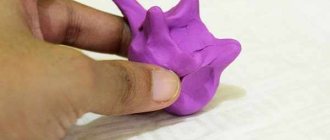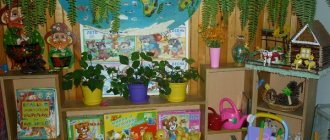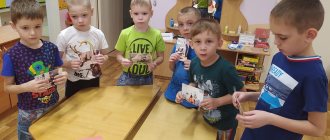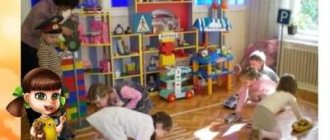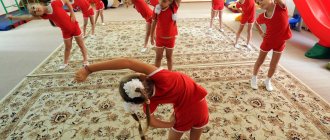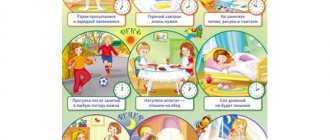Objectives of teaching drawing in different age groups
Educational:— Improve the ability to work with various visual materials, tools and artistic techniques.
— Improve the ability to obtain different shades by mixing colors.
— Strengthen the ability to work with the color wheel, determine color harmonies.
— Continue learning to harmonize colors based on diagrams and tables.
— To consolidate the ability to use the expressive capabilities of color when creating an image, reflecting not only the general properties of objects, but also one’s attitude towards it, the emotional and aesthetic state.
— Continue to learn how to subordinate various means of expression (color, shape, technique, composition) to achieve the integrity of the image.
— Continue to teach drawing techniques.
- Continue to teach how to create images of different nature (realistic, stylized, abstract) using (dots, lines, strokes, spots).
— Continue to develop compositional skills in the process of mastering patterns: texture, horizon line, balance, symmetry (asymmetry), rhythm, dynamics (statics), compositional center, perspective, chiaroscuro.
— Continue to teach drawing from life.
— Continue to introduce various types of decorative and applied arts, paintings, their motifs and elements.
— Learn to compose motifs for decorative paintings, using their elements and techniques.
- Continue to teach how to make an ornament (geometric, floral), introduce zoomorphic ornament.
- Continue to learn patterns on different shapes.
— Continue to learn how to identify simpler shapes in complex objects.
— Teach plot drawing.
Educational:
— Strengthen the ability to use a palette to obtain shades.
— Continue to develop form-building movements: drawing dots of different shapes and character; drawing straight, wavy, curved, spiral, closed and mixed lines in various combinations and compositions.
- Continue to develop a sense of color and shape; compositional skills.
— Develop: visually imaginative thinking; visual and effective thinking in the process of creating images.
— Reinforce the concepts used by the teacher at the previous age stage.
— Expand the child’s vocabulary with new special concepts: reflex, ornament, perspective: linear, aerial; depth; space; texture; structure.
- Develop memory and imagination.
Educational:
— Stimulate interest in the creative process in drawing.
— To develop aesthetic taste in the process of creating expressive images.
— Continue to cultivate accuracy when working with visual materials and tools.
— Continue to develop the ability to negotiate while creating teamwork.
— Cultivate the ability to rejoice in the achievements of others and empathize with their failures, to develop a sense of mutual assistance.
— Continue to develop the ability to perform certain actions according to the verbal instructions of the teacher.
— To develop an aesthetic attitude towards the drawing process.
Summary of drawing lesson “The Magical World of Colors”
Brief description of the document:
Lesson notes
on drawing “The Magic World of Colors”.
Second junior group.
Purpose: to introduce children to paints and brushes; learn to identify the color of paint, hold a brush correctly, put paint on a brush, rinse the brush in water, wipe the brush with a napkin; develop the desire to paint with a brush, admire the beauty of various objects.
Equipment: flannelgraph, figures for flannelgraph (Pencil and Brush); easel, pieces of paper, box of paints (watercolor, gouache); brushes, cups of water, napkins.
Preliminary preparation: a tour of the group, during which the teacher draws the children’s attention to the colorfulness of the objects around them.
Progress of the lesson.
Educator: Look, children, who came to visit us today
(The teacher attaches a Pencil figurine to the flannelgraph).
Yes, this is our friend Pencil, with whom we have already drawn many drawings. But he did not come alone. Pencil, introduce us to your friend.
Pencil: This is my friend brush. (The teacher attaches a figurine of Brush to the flannelgraph.) But she didn’t come alone, but with her best friends. Brush, introduce us to them.
Brush: Try to guess for yourself:
Multi-colored sisters,
Written beauties,
They are in the box,
They want to draw quickly.
(If the children cannot guess, the teacher shows a box of paints)
Brush: Yes, these are my friends - paints. Together we decorate all objects and toys. Here in your group, I see, it’s beautiful. Let's see which one
my friends tried hard here.
(The teacher shows the children one of the paints, the children must name an object of the same color located in the group. A variant of this task: put toys of different colors on the table: balls, cubes, cars. Children must also identify the color of the paint with the color of the toy.)
Phys. Just a minute.
All the guys stood up together - straighten up
And they walked on the spot. - walking in place
Stretch on your toes - raise your arms up
And now they’ve bent over backwards. - bend over, put your hands behind your head
Like springs we sat down - sit down
And they sat down quietly at once. - straighten up and sit down.
Educator: Yes, Brush, each of your friends tried to make our group beautiful. Thank you, Brush. Will you teach our children to draw so beautifully?
Brush: Of course. Let's start by learning how to properly pick up a brush.
(The teacher demonstrates how to hold a brush correctly and invites the children to pick up the brushes).
Brush: Now don’t forget to put the brush in a glass of water and only then put paint on the brush.
Tell me the paint color,
(children name the color of the paint)
Dip your tail in paint
Careful, don't rush.
Look, here I am,
Well done my friends.
(The teacher makes sure that the children correctly hold the brush just above the metal part)
Now you can try to draw something.
(The teacher draws a straight line on the easel, saying: “This is the kind of tape I got,” and invites the children to do the same on their pieces of paper).
Brush: You guys are doing so well! Now, if you want to be friends with me, rinse your brushes in water and dry them with a napkin. Then we won’t get spoiled and together with you we will draw a lot of beautiful and interesting things.
Summary of the lesson.
Educator: Thank you and your friends - paints, Brush. Come visit us more often. Our children really want to learn to draw. Really, guys?
How many colors are there in the world1
So much beauty!
Let's learn to draw
Me, and you, and us.
Drawing with paints for preschoolers
Visual activities in general and drawing in particular are an effective tool for the comprehensive development of preschool children. Creative activities develop thinking, improve memory and attention, stimulate imagination, improve mood, and help unleash creative potential.
- How to get your child interested in painting?
- What do you need to prepare for classes?
- What techniques can be offered to a preschooler?
Let's figure it out together, friends!
It all starts with interest
You may realize how beneficial drawing is for your child. You can read many specialized books and articles. You can explain to your child why he SHOULD draw. But all this will be useless if a spark of sincere interest does not flash in children's eyes. The moment the baby WANTS to pick up a brush, drawing will turn from a chore into magic for him. But what if the little one is indifferent to the album and colors? Don't give up, friends, don't give up!
- Draw yourself . Just take a regular white sheet and the simplest honey watercolor. Apply a few strokes of color. Don't be afraid to experiment. You don't have to create a masterpiece. Hang your drawing in a prominent place and admire it periodically. A start! A precedent has been created.
- Make drawing accessible . The more complex the process of preparing and cleaning the workplace for drawing, the less desire there is for a child who has not yet become imbued with the possibilities of visual activity to be distracted from his favorite and usual games. Keep the album and paints nearby.
- Avoid criticism . Drawing in preschool age is a way of self-expression. This is not an academic discipline in which you need to give a reasoned assessment, discuss the means of expression used, colors, brush strokes, perspective...
- Give me freedom . If your child doesn't know what to draw, you can use a sample to make it easier for him. But don’t limit the flight of his imagination. There are no categories of “right” and “wrong”. A child’s drawing should not be similar to the model if His Majesty Imagination leads the little artist in a different direction. Don’t forget: for now your task is to make friends between the child and paints, and not to provide a high-quality art education.
- Focus on results . Designate a space in your living space for a gallery of children's drawings. You can attach them to the refrigerator with magnets, place them in photo frames, or hang them on vertical surfaces of cabinet furniture using tape. The main thing is that the result of children's creativity is visible. This will create the right atmosphere, conducive to new experiments with paints.
Why paints
- The most convenient way to introduce a child to visual arts at an early age is with the help of paints. Factory-made or self-made harmless finger paints allow a child who is not yet able to hold a brush in his hands to use his own hands and feet as a drawing tool.
- Painting allows for the use of a huge variety of techniques. Some techniques are familiar and familiar to everyone, others are less common and are called “non-traditional”. But the main thing is that such diversity will allow us to offer something new, something unusual and interesting every time. You certainly won't be bored.
- Working with paint, the child not only learns to distinguish and name colors, but also gains power over color: creates new shades by mixing different paints or experimenting with the degree of wetting of the brush and paper.
How to prepare for a drawing lesson at home
So, it is important to get your child interested in drawing. To avoid distractions during class, make sure you have everything you might need in advance:
- Paper . It is better to draw not in albums, but on separate sheets. The paper should be thick enough. You should have sheets of different sizes and shapes in stock.
- Paints . Although finger paints are positioned as a material for drawing with the smallest children, interest in them can continue into older preschool age. But it is still important to introduce your child to gouache, watercolor, acrylic and stained glass paints. Please note: start with gouache, as it is much easier to work with than watercolor and other types of paint.
- Tassels . Of course, for a small artist you don’t need to stock up on professional sable fur brushes, but you still need to have several brushes of different sizes in your arsenal. For non-traditional techniques, the brush can be a toothbrush, natural material, threads, foam rubber and even vegetables.
- Jar for water. It is very convenient to use plastic sippy cups with a special lid. A spray bottle can be useful, with which you can easily evenly moisten the sheet under the design.
- Palette . Palettes for painting with paints can be purchased at any stationery or artist supply store, but you can do without additional costs and use a plastic disposable plate or lid from plastic containers for these purposes.
- Napkins . With wet paint it is easy to remove paint from the body of an artist who is passionate about the process, while with dry paint it is easy to correct errors on the canvas.
Of course, the most important thing for parents who want to teach their child to paint is patience and interesting ideas.
We master the basic techniques of painting with paints
- Dipping . Dip the brush into the paint, and then apply it to the sheet with the entire surface of the bristles. The result will be a trapezoidal print. In this way, you can draw various abstract patterns, depict tree leaves or flower petals, animal tracks or flames.
- Pokes . Use a hard, semi-dry brush with short bristles. You can select several tassels for this method and trim them to create dramatic "fluffy" dots. Hold the “poke” brush strictly perpendicular to the surface of the paper. This technique can be used to draw landscapes, depict the crown of trees or falling leaves, fireworks or the starry sky. Don't be afraid to fantasize!
- Drawing with strokes. You can draw a simple drawing on a piece of paper with a simple pencil, and then fill it with colorful strokes with different colors, making confident but short movements with a brush. An interesting effect can be achieved if you apply strokes with brushes of different diameters. You can paint the whole picture with brush strokes or use this technique to create a background.
Friends! Your home painting activities should, first of all, bring pleasure to both the baby and you. Enjoy the process, don’t be afraid to experiment and don’t strive for realistic drawings. Create, communicate, discuss the results of creative efforts. A good way to develop aesthetic artistic taste and involve a child in the magical world of painting is family visits to museums and exhibitions.
Happy, bright parenting to you! Until next time.
